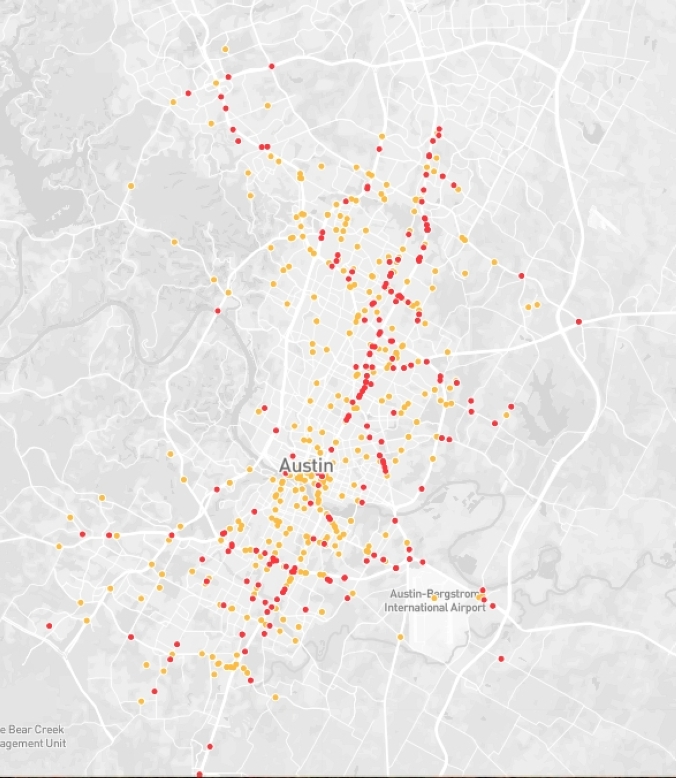The impact
Over 40,000 people have died on roadways nationally, with a disproportionate number of deaths occurring while walking or biking, according to a USDOT news release.Locally, over 350 people were seriously injured or killed in the last five years at just 13 intersections within the metro. These intersections also held some of the most expensive traffic-related costs from crashes, according to city documents.
The money allocated to Austin will be used to improve or add crosswalks at nearly 50 intersections throughout the city. Upgrades will utilize proven safety countermeasures and low-cost strategies like rectangular rapid flashing beacons, pedestrian crossing islands, curb extensions and pedestrian hybrid beacons.
The city’s Transportation and Public Works Department is currently working to identify the highest priority locations, which will follow a previously adopted Sidewalks, Crossings and Shared Streets plan.
The project, to be called the Safer Transportation Routes using Inclusive, Demonstrative and Equitable Solutions—STRIDES—is estimated to cost a total of $13.8 million and will target crossings documented as high-injury locations.
The city has already allocated $2.5 million in matching funds towards the project.
“Austin’s Transportation and Public Works Department has a proven track record of reducing fatal and serious injury crashes through low-cost, effective safety projects,” Austin Mayor Kirk Watson said in a news release. “This funding will help us expand that work, making Austin streets safer for everyone who uses them, whether they’re driving, walking, cycling or rolling.”
The framework
U.S. Secretary of Transportation Pete Buttigieg announced a total of $59 million in grants for 19 counties across Texas as part of $1 billion in funding from USDOT’s Safe Streets For All program.
“We should be energized by the fact that together we’ve reduced traffic fatalities for more than two years in a row now, but so much work remains to fully address the crisis on our roads,” Buttigieg said in the USDOT news release. “Today’s roadway safety grants will deliver funding directly to 354 communities [nationwide] and continue the important work we’re doing to reduce traffic fatalities to the only number that’s acceptable—zero.”
This years’ grant represents Austin’s third funding award, having received $22.9 million in 2022 and $288,000 in 2023.
Remember this?
Over the years, the funding has helped support the city’s plans for the Vision Zero initiative which aims to fully eliminate traffic-related serious injuries and fatalities.
City staff evaluate intersections linked to the high-injury roadway network previously identified in work towards Vision Zero.

Thus far, the Transportation and Public Works department has completed safety improvements on 27 separate intersections in Austin, impacting drivers, bicyclists and pedestrians alike.
Major intersections have a higher likelihood of severe injury or death because of the many conflict points, such as high speeds and high volume, Lewis Leff, Vision Zero’s lead traffic safety officer, previously explained to Community Impact.
Between 2019 and 2023, an estimated 37% of serious injuries or fatal crashes in Austin occurred at a signalized intersection, according to a report released in June by the city’s Vision Zero program.
Because these locations represent a relatively small portion of the entire transportation network, city staff have focused low-cost engineering countermeasures at these locations, the report explains. Some of the improvements included:
- Adding green protective arrows and flashing yellow arrows for left turners
- Increasing crosswalk visibility
- Adding bicycle detection and signage
- Adjusting clearance time for red and yellow lights
- Adding flashing warning signs





